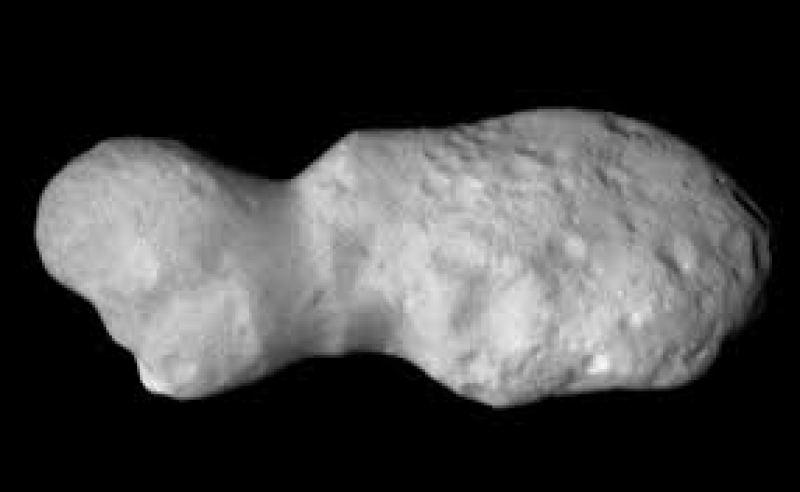- Khulna falls short of jute output target for lack of incentives |
- UNRWA Report on the Humanitarian Crisis in Gaza & West Bank |
- Rail link with Khulna cut off as train derails in Chuadanga |
- 3 killed, 10 injured in Pabna Bus-truck collision |
- UN Chief Appalled as Gaza Crisis Deepens, Aid Blocked |
NASA releases first close-up image of Peanut-Shaped Asteroid

NASA has released the first high-resolution images of the main-belt asteroid Donaldjohanson, revealing its unusual peanut-like shape following a key encounter by the Lucy spacecraft earlier this year.
The images were captured on April 20, when the Lucy mission performed a fly-by of the asteroid, located in the solar system’s main asteroid belt. The milestone serves as a crucial test ahead of the mission’s primary goal — exploring Jupiter's Trojan asteroids.
Using its L'LORRI imager, Lucy captured the high-resolution images just minutes before its closest approach to the asteroid. The photos reveal that Donaldjohanson is larger than previously estimated, measuring approximately 8 kilometers long and 3.5 kilometers wide at its broadest point. Its elongated, peanut-like shape features a rough, cratered surface.
According to NASA, the asteroid rotates slowly, taking 251 hours to complete one full rotation. Scientists are now analyzing the fly-by data to gain further insights into the asteroid's structure and composition.
Sharing the newly released image, NASA wrote, “Asteroid Donaldjohanson as seen by the Lucy spacecraft from a range of about 1,700 miles (2,700 km), about 3.2 minutes before closest approach on April 20, 2025. This is the highest resolution image yet of the entire asteroid, taken just before it overfilled the L'LORRI field of view. The smallest visible features are about 130 feet (40 meters) across. The illumination conditions, with the Sun almost behind Lucy, greatly reduce the contrast of topographic details.”
The asteroid is named after anthropologist Donald Johanson, who discovered the famous fossilised skeleton known as “Lucy,” a key find in the study of human ancestry. NASA’s Lucy mission takes its name from the fossil, the agency confirmed.
NASA scientists described the successful fly-by as a "dress rehearsal," demonstrating that both the spacecraft and mission team are prepared for the main objective — exploring Jupiter's Trojan asteroids.
The spacecraft is currently in a quiet cruise phase, traveling through the main asteroid belt at speeds exceeding 30,000 mph (50,000 km/h).
Lucy is expected to begin its Trojan asteroid encounters in August 2027, starting with asteroid Eurybates. Over the course of less than 15 months, the mission will conduct four encounters and observe at least six asteroids, including two small satellites identified by the Lucy team, reports UNB.

